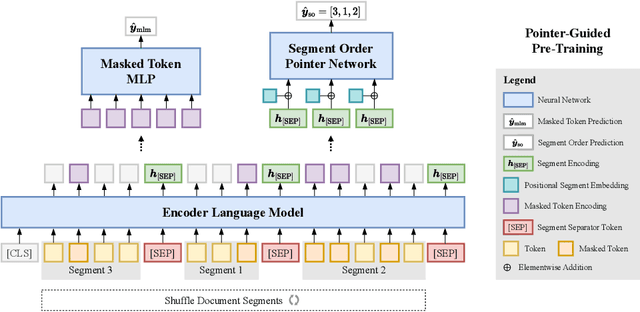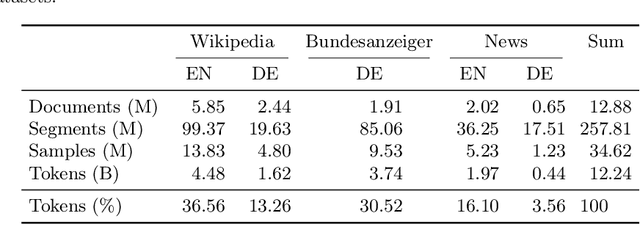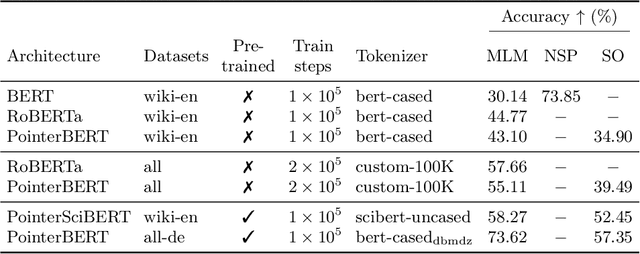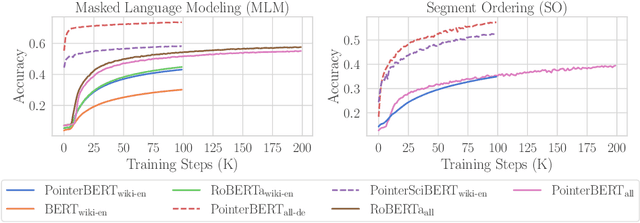Christian Bauckhage
Immersive Explainability: Visualizing Robot Navigation Decisions through XAI Semantic Scene Projections in Virtual Reality
Apr 01, 2025Abstract:End-to-end robot policies achieve high performance through neural networks trained via reinforcement learning (RL). Yet, their black box nature and abstract reasoning pose challenges for human-robot interaction (HRI), because humans may experience difficulty in understanding and predicting the robot's navigation decisions, hindering trust development. We present a virtual reality (VR) interface that visualizes explainable AI (XAI) outputs and the robot's lidar perception to support intuitive interpretation of RL-based navigation behavior. By visually highlighting objects based on their attribution scores, the interface grounds abstract policy explanations in the scene context. This XAI visualization bridges the gap between obscure numerical XAI attribution scores and a human-centric semantic level of explanation. A within-subjects study with 24 participants evaluated the effectiveness of our interface for four visualization conditions combining XAI and lidar. Participants ranked scene objects across navigation scenarios based on their importance to the robot, followed by a questionnaire assessing subjective understanding and predictability. Results show that semantic projection of attributions significantly enhances non-expert users' objective understanding and subjective awareness of robot behavior. In addition, lidar visualization further improves perceived predictability, underscoring the value of integrating XAI and sensor for transparent, trustworthy HRI.
CFIRE: A General Method for Combining Local Explanations
Apr 01, 2025Abstract:We propose a novel eXplainable AI algorithm to compute faithful, easy-to-understand, and complete global decision rules from local explanations for tabular data by combining XAI methods with closed frequent itemset mining. Our method can be used with any local explainer that indicates which dimensions are important for a given sample for a given black-box decision. This property allows our algorithm to choose among different local explainers, addressing the disagreement problem, \ie the observation that no single explanation method consistently outperforms others across models and datasets. Unlike usual experimental methodology, our evaluation also accounts for the Rashomon effect in model explainability. To this end, we demonstrate the robustness of our approach in finding suitable rules for nearly all of the 700 black-box models we considered across 14 benchmark datasets. The results also show that our method exhibits improved runtime, high precision and F1-score while generating compact and complete rules.
Pointer-Guided Pre-Training: Infusing Large Language Models with Paragraph-Level Contextual Awareness
Jun 06, 2024



Abstract:We introduce "pointer-guided segment ordering" (SO), a novel pre-training technique aimed at enhancing the contextual understanding of paragraph-level text representations in large language models. Our methodology leverages a self-attention-driven pointer network to restore the original sequence of shuffled text segments, addressing the challenge of capturing the structural coherence and contextual dependencies within documents. This pre-training approach is complemented by a fine-tuning methodology that incorporates dynamic sampling, augmenting the diversity of training instances and improving sample efficiency for various downstream applications. We evaluate our method on a diverse set of datasets, demonstrating its efficacy in tasks requiring sequential text classification across scientific literature and financial reporting domains. Our experiments show that pointer-guided pre-training significantly enhances the model's ability to understand complex document structures, leading to state-of-the-art performance in downstream classification tasks.
Model-agnostic Body Part Relevance Assessment for Pedestrian Detection
Nov 27, 2023Abstract:Model-agnostic explanation methods for deep learning models are flexible regarding usability and availability. However, due to the fact that they can only manipulate input to see changes in output, they suffer from weak performance when used with complex model architectures. For models with large inputs as, for instance, in object detection, sampling-based methods like KernelSHAP are inefficient due to many computation-heavy forward passes through the model. In this work, we present a framework for using sampling-based explanation models in a computer vision context by body part relevance assessment for pedestrian detection. Furthermore, we introduce a novel sampling-based method similar to KernelSHAP that shows more robustness for lower sampling sizes and, thus, is more efficient for explainability analyses on large-scale datasets.
SugarViT -- Multi-objective Regression of UAV Images with Vision Transformers and Deep Label Distribution Learning Demonstrated on Disease Severity Prediction in Sugar Beet
Nov 07, 2023Abstract:Remote sensing and artificial intelligence are pivotal technologies of precision agriculture nowadays. The efficient retrieval of large-scale field imagery combined with machine learning techniques shows success in various tasks like phenotyping, weeding, cropping, and disease control. This work will introduce a machine learning framework for automatized large-scale plant-specific trait annotation for the use case disease severity scoring for Cercospora Leaf Spot (CLS) in sugar beet. With concepts of Deep Label Distribution Learning (DLDL), special loss functions, and a tailored model architecture, we develop an efficient Vision Transformer based model for disease severity scoring called SugarViT. One novelty in this work is the combination of remote sensing data with environmental parameters of the experimental sites for disease severity prediction. Although the model is evaluated on this special use case, it is held as generic as possible to also be applicable to various image-based classification and regression tasks. With our framework, it is even possible to learn models on multi-objective problems as we show by a pretraining on environmental metadata.
Controlled Randomness Improves the Performance of Transformer Models
Oct 20, 2023

Abstract:During the pre-training step of natural language models, the main objective is to learn a general representation of the pre-training dataset, usually requiring large amounts of textual data to capture the complexity and diversity of natural language. Contrasting this, in most cases, the size of the data available to solve the specific downstream task is often dwarfed by the aforementioned pre-training dataset, especially in domains where data is scarce. We introduce controlled randomness, i.e. noise, into the training process to improve fine-tuning language models and explore the performance of targeted noise in addition to the parameters of these models. We find that adding such noise can improve the performance in our two downstream tasks of joint named entity recognition and relation extraction and text summarization.
Informed Named Entity Recognition Decoding for Generative Language Models
Aug 15, 2023Abstract:Ever-larger language models with ever-increasing capabilities are by now well-established text processing tools. Alas, information extraction tasks such as named entity recognition are still largely unaffected by this progress as they are primarily based on the previous generation of encoder-only transformer models. Here, we propose a simple yet effective approach, Informed Named Entity Recognition Decoding (iNERD), which treats named entity recognition as a generative process. It leverages the language understanding capabilities of recent generative models in a future-proof manner and employs an informed decoding scheme incorporating the restricted nature of information extraction into open-ended text generation, improving performance and eliminating any risk of hallucinations. We coarse-tune our model on a merged named entity corpus to strengthen its performance, evaluate five generative language models on eight named entity recognition datasets, and achieve remarkable results, especially in an environment with an unknown entity class set, demonstrating the adaptability of the approach.
Improving Zero-Shot Text Matching for Financial Auditing with Large Language Models
Aug 14, 2023


Abstract:Auditing financial documents is a very tedious and time-consuming process. As of today, it can already be simplified by employing AI-based solutions to recommend relevant text passages from a report for each legal requirement of rigorous accounting standards. However, these methods need to be fine-tuned regularly, and they require abundant annotated data, which is often lacking in industrial environments. Hence, we present ZeroShotALI, a novel recommender system that leverages a state-of-the-art large language model (LLM) in conjunction with a domain-specifically optimized transformer-based text-matching solution. We find that a two-step approach of first retrieving a number of best matching document sections per legal requirement with a custom BERT-based model and second filtering these selections using an LLM yields significant performance improvements over existing approaches.
An Empirical Evaluation of the Rashomon Effect in Explainable Machine Learning
Jun 29, 2023Abstract:The Rashomon Effect describes the following phenomenon: for a given dataset there may exist many models with equally good performance but with different solution strategies. The Rashomon Effect has implications for Explainable Machine Learning, especially for the comparability of explanations. We provide a unified view on three different comparison scenarios and conduct a quantitative evaluation across different datasets, models, attribution methods, and metrics. We find that hyperparameter-tuning plays a role and that metric selection matters. Our results provide empirical support for previously anecdotal evidence and exhibit challenges for both scientists and practitioners.
Towards automating Numerical Consistency Checks in Financial Reports
Nov 11, 2022Abstract:We introduce KPI-Check, a novel system that automatically identifies and cross-checks semantically equivalent key performance indicators (KPIs), e.g. "revenue" or "total costs", in real-world German financial reports. It combines a financial named entity and relation extraction module with a BERT-based filtering and text pair classification component to extract KPIs from unstructured sentences before linking them to synonymous occurrences in the balance sheet and profit & loss statement. The tool achieves a high matching performance of $73.00$% micro F$_1$ on a hold out test set and is currently being deployed for a globally operating major auditing firm to assist the auditing procedure of financial statements.
 Add to Chrome
Add to Chrome Add to Firefox
Add to Firefox Add to Edge
Add to Edge